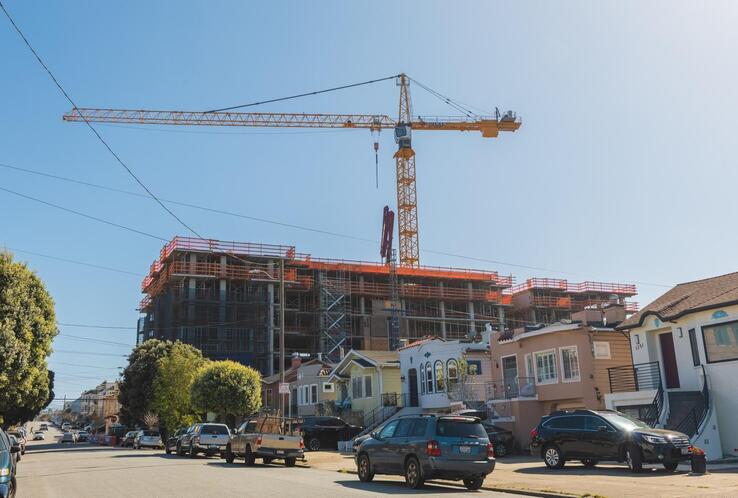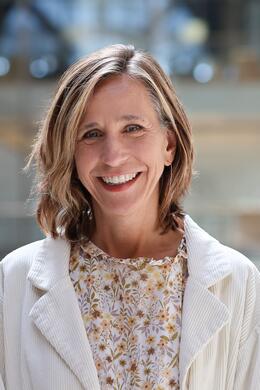San Francisco is working on an ambitious rezoning of its Western and Northern neighborhoods to allow new housing and reimagining downtown and the future of
You studied architecture and urban design in school. What motivated you to go into public service?
I initially stumbled into public service — starting in an entry-level role at the Department of Housing and Urban Development after moving to Washington, D.C. Even in that junior position, I saw how the research I summarized contributed to national policies that had the potential to affect millions of lives. A series of work experiences led me to work at the city scale. When you work at that scale in San Francisco, you see how local policies not only affect local communities but also can influence change nationwide.
You worked at SF Planning during the Great Recession and the housing and economic boom of the 2010s. What has changed in housing and planning since you left that department?
The 2007 recession was when I first began to understand how deeply economic forces shape what gets built. As a young planner, I had the idealistic belief that with the right vision and zoning, we could shape neighborhoods block by block. I think many of us were trained with a bit of that grandiose, Robert Moses-style confidence. The recession was a wake-up call: our carefully crafted plans stalled, entitlements sat unbuilt, and the reality of markets, risk, and timing carried the day. That spurred my curiosity in how development actually happens, and I set out to understand how capital flows, how decisions get made in boardrooms and investment committees, and how public policy can influence those decisions.
Since then, the development landscape has only grown more complex. We’ve moved into what one of my favorite urban thinkers calls the “nonlinear economy,” meaning the relationship between factors like planning, land use, and growth can no longer be predictable or sequential. Here in San Francisco, planners are working to reconcile housing, affordability and community needs with a volatile real estate market, dynamically evolving work patterns, and an often polarized public. I was trained to be a designer and regulator; the job today necessitates being a strategist, facilitator, and problem solver.
You were a housing developer for most of the pandemic, and then became the executive director of the Office of Economic and Workforce Development at a time when San Francisco was reimagining downtown SF in the aftermath of COVID. What did you learn about San Francisco governance during that time?
That it can be flexible when it wants to be! Look, I think both the private and the public sector here in San Francisco were slow to realize that we weren’t just going to “snap back” to pre-COVID norms — there was a sense of waiting it out, of hoping that downtown workers, tourism, and small businesses would just return on their own. But once it became clear that the change was structural, our elected officials moved to allow flexibility — in use of our streets, in land use — and to try new things, including ambassadors, pop-up programs, and night markets. It might sound strange to laud experimentation, especially in a city that’s been called the innovation capital of the world, but trying new things inevitably means some of those new things will fail. Government is notoriously bad at allowing failure. Most governments prefer inaction to failure every single time, in large part because inaction generates far fewer headlines and less pushback. It was San Francisco’s growing civic courage — a willingness to try, to take risks, and to even fail — that drove me back to planning work.
In our local, regional, and state advocacy, SPUR has been deeply involved in increasing the state government’s authority and oversight over local city planning. What do you think of that stance as a local planning director?
When you study urban planning, you learn that the profession is littered with bad decisions that often need to be undone at higher levels. Early U.S. zoning, including in California, was explicitly racist; it took the U.S. Supreme Court to take out racially restrictive covenants and redlining, and, in the 1960s, our state finally joined that effort with the Fair Housing Act. Much of the state’s recent actions stem from this history and from a realization that exclusionary zoning policies that limited density often reinforced racial and economic segregation.
It’s important not to overstate a local planning director or department’s authority: remember, we all follow the direction of local codes and legislation, our elected officials, our commissions, and — because of their ability to delay or block projects through tools like the California Environmental Quality Act — sometimes even special interests. But the good news is that the legislators working most actively on housing and land use issues in California are Bay Area-based. I feel incredibly fortunate to have state partners who see our issues first-hand and who, for the most part, work with us on solutions.
The San Francisco Housing Element rezoning is well underway, and its passage and implementation will likely be your first major milestone as planning director. What does this rezoning represent for San Francisco?
San Francisco has made a commitment to accommodate more than 80,000 new homes
At its core, this rezoning reflects an understanding that change is inevitable. Whether we plan for it or whether we direct it, San Francisco will evolve with demographic shifts, economic cycles, and the choices of people who want to live, work, or raise children here. Refusing to plan for that change doesn’t prevent it — it just means we lose the opportunity to shape it thoughtfully, equitably, and proactively. The housing element rezoning gives us a framework to guide that change — to direct growth toward well-resourced areas, to open up access to opportunity, and to align the city’s housing policies with its values. I’m proud that San Francisco is taking ownership of our future, rather than letting that future be determined by inertia, exclusion, or legal noncompliance.

It's a bleak time for people who need, or work to deliver, affordable housing in San Francisco. Our state budget has been cutting funding for affordable housing, the city is struggling to balance a significant deficit, the federal government is increasingly unpredictable, and the $20 billion regional bond for affordable housing failed to make it to the ballot in 2024. Given that the Planning Department doesn’t fund or build affordable housing directly, what do you see as its responsibility to those who do?
Per the city charter, the Planning Department is supposed to prepare and implement our general plan and to administer and enforce the planning code. So it isn’t our official responsibility to “deliver” anything. But I think we have that responsibility. Creating zoning for housing that doesn’t get built isn’t a real answer to our challenges. What is the Planning Department’s role in shaping affordability mechanisms — financial, regulatory, and land-based — outside of the planning code? Should we be examining cost reductions in our transfer tax, which is higher than that of other jurisdictions? Should we be looking at code changes that open up new construction methodologies, like allowing single stairway exits in multifamily buildings? I think the department can do all these things.
What are some of your other priorities as planning director?
Removing the roadblocks in our codes, in our entitlement process, and in our permitting is critical to reduce vacancies, to spur downtown’s rebirth, and to move our economy forward. Supporting the creation of new tools for affordability is necessary to meet our housing goals. And working better as a department — modifying workflows to align with PermitSF, tracking and sharing data about progress, embedding our equity work in our everyday approvals — is essential in earning the trust of the public, our partners, and the people who depend on us to do our job well.
